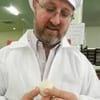Explore all the information on
Poultry vaccines
Disease prevention by vaccination is an integral part of flock health management protocols. Active immunization using live vaccines is the current industry standard. Routinely used vaccines in chickens include MDV, NDV, IBV, and IBDV, and in turkeys NDV and HEV. Newer vaccines, including molecular recombinants in which genes of immunogenic proteins from infectious agents are inserted into a live viral vector, are also being examined for commercial use. Efforts are under way to enhance vaccine efficacy by the use of adjuvants, particularly cytokines. The vaccine delivery systems include in ovo injection, aerosol, spray, drinking water, eye drop, and wing web injection. The in ovo vaccination procedure is relatively new and at the present time it is used primarily to vaccinate broiler chickens against MDV. Birds respond to vaccines by developing humoral and cellular immune responses. There are two main types of vaccine available for poultry: live or killed.
Robert Gauthier (WVEPAH) discussed the different trends and concerns of the poultry industry around the world, during IPPE 2020 in Atlanta, USA....
Comments : 1
Recommendations: 5
I. INTRODUCTION Infectious laryngotracheitis (ILT) is an important respiratory disease of chickens caused by ILT virus (ILTV, Gallid herpesvirus 1) that infects the upper respiratory tract and conjunctiva resulting in high morbidity and sometimes mortality (García et al., 2013). Vaccination with live attenuated vaccines administered by eye drop is generally effective: however for commercial meat chickens mass vaccination in drinking water via nipple drinkers is generally...
Comments : 1
Recommendations: 0


Bacillus Amyloliquefaciens Improves Performance and Gut Integrity in Broilers Fed Low Protein Diets under Necrotic Enteritis Challenge
Suggested link
Chris Morrow (Bioproperties) commented about the problems that arise from mycoplasma infections in layer farms and explained the benefits of a live mycoplasma vaccination program, including costs and profits....
Comments : 35
Recommendations: 9
Greg Mathis (Southern Poultry Research) talked about the importance of letting birds develop immunity and the use of alternative anticoccidials, during IPPE 2020 in Atlanta, USA....
Comments : 1
Recommendations: 3
.jpg&w=3840&q=75)

40 Years of Success in China with Hy-Line (Mandarin-language video)
Suggested link
What puzzle? – How to grow broilers and produce eggs without the routine use of antibiotics in poultry areas (with endemic mycoplasma challenge). For a long time antibiotics have been used in poultry and egg production but there is considerable consumer/regulatory pressure, price pressure and technical reasons why the administration of antibiotics on a routine basis needs to be phased out of these production systems. The development of resistance in...
Comments : 11
Recommendations: 1
Introduction Clostridium septicum (CS) is a ubiquitous, spore-forming bacterium associated with spontaneous gas gangrene in both livestock and humans. The spores can persist in harsh environments, such as the gastrointestinal tract or tissue, and remain undetected for extended periods. When environmental conditions are appropriate for growth, the spores will germinate and proceed to proliferate. CS is capable of producing a variety of toxins. However, the alpha-toxin is the one...
Comments : 0
Recommendations: 0
I would be grateful if somebody suggested me some reasons to review behind a phenomenon that I used to encounter whenever we vaccinated our parent breeder with Ma5 clone 30 combined. IB titer and % CV are below the expected level contrary to ND that is within the expected range.
Thanks and regards. ...
Comments : 5
Recommendations: 0
Salmonellosis continues to be one of the most serious challenges in poultry farming. On the one hand, that which originates from strains causing poultry diseases and, above all, from those serotypes/serovars causing food-borne toxicosis (food...
Comments : 0
Recommendations: 0
Nasser Alhaj Ali (Texas A&M University) explained the results of his research on vaccines for this disease and commented on infectivity and administration, during IPPE 2020 in Atlanta, USA....
Comments : 2
Recommendations: 0
Dr. Mauricio Coppo from the University of Melbourne summarizes his talk about the behavior of the ILT virus and generation of new challenges in the poultry industry. ...
Comments : 1
Recommendations: 0
Intro by Dr. Stephen Collett: Vectored vaccines have from their conception been promoted as the ultimate answer to the problems encountered when using immunization to reduce the impact of disease challenge on flock health and productivity. This interesting and thorough but succinct mini-review shows that the quest has unfortunately proven more complex than initially anticipated. Only recently have scientists been able to provide the field veterinarian and...
Comments : 3
Recommendations: 0
Introduction The immune system of poultry is typically divided into innate responses and adaptive responses, and reviews of the avian immune system can be found elsewhere (Korver, 2012; Kogut, et al., 2020). Briefly, the innate response includes non-specific mechanisms of exclusion such as the skin and mucosal surfaces of the digestive tract, lungs and other organ systems with exposure to the outside world. Thus, one of the primary means of...
Comments : 0
Recommendations: 1
Infectious bronchitis live vaccine is given recommended right or wrong at the stage of laying birds(Age 25 wks above any situation). Have any harmful effects on egg production????...
Comments : 0
Recommendations: 0
The vaccination of laying hens with live vaccines against Salmonella Enteritidis applied in a 3-dose vaccination regimen during rearing has been one of the measures implemented that has reduced the prevalence of Salmonella in poultry and therefore also the risk of...
Comments : 0
Recommendations: 1
Live ts mycoplasma vaccines were created to be safe but still immunogenic. So how can we assess this immunogenicity in the field? This bulletin condenses the experience of 20 years trying to monitor vaccine response and differentiate problems from normal responses. Various approaches have been taken to improve serological monitoring (for example, cloned homologous antigens) and understand problems but the conclusion is that humoral antibody is not the mechanism of protection of these...
Comments : 1
Recommendations: 0
Summary
Over the last decennia different recombinant viral vector vaccines for poultry have been introduced in several countries.
The first vaccines were all based on the Fowl pox(FP) virus used as the vector (e.g. the avian influenza (AI) recombinant (r) FP/H5, NewcastleDisease (ND) rFP/ND, infectiouslaryngotrachetis (ILT) rFP/ILT vaccines. The most recent ("second...
Comments : 17
Recommendations: 3
...
Comments : 1
Recommendations: 0
I. INTRODUCTION Field success of mass ILT vaccination in young meat chickens is often accompanied by reports of vaccine reactions, often rolling through the flock for some time, and even apparent vaccination failure with wild strain outbreaks in vaccinated flocks. This is in spite of laboratory challenge studies often describing good protection of vaccines against an artificial challenge with the field outbreak strain (Arzey and Arzey, 1993). Laboratory studies (Rodrigues-Avila...
Comments : 0
Recommendations: 0


Bacillus Amyloliquefaciens Improves Performance and Gut Integrity in Broilers Fed Low Protein Diets under Necrotic Enteritis Challenge
Suggested link
Manuel Da Costa (Zoetis) explained the advantages of a live vaccine for Salmonella in cases of poor gut health, during IPPE 2020 in Atlanta, USA....
Comments : 11
Recommendations: 5
The Evonik Corporation award is an annual award given as an achievement award, i.e., for distinctive contributions to poultry science advancement, covering a period of not more than seven years preceding the annual award.
Lisa...
Comments : 1
Recommendations: 0




















.jpg&w=3840&q=75)












